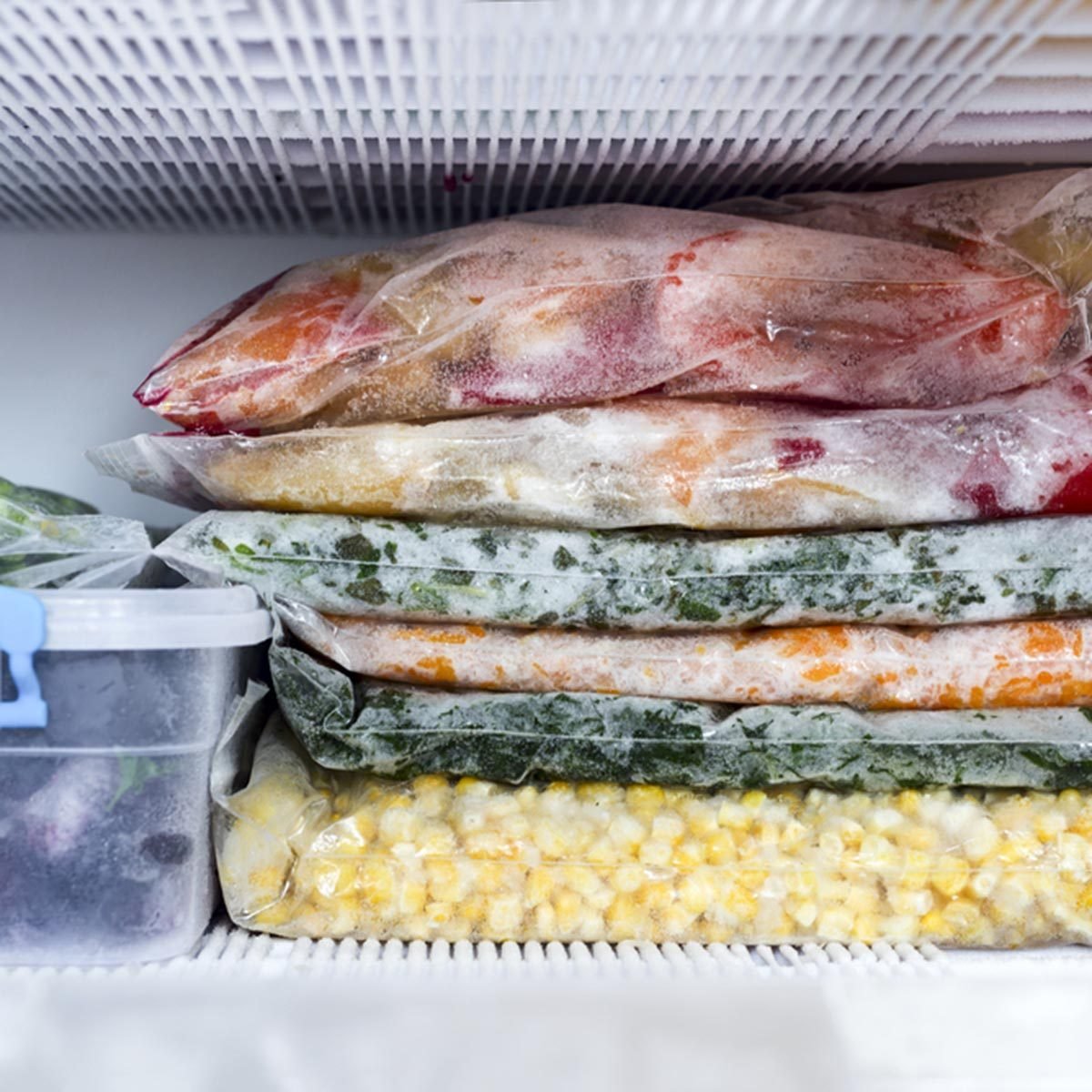
Make your marinade tangy
Adding vinegar or lemon juice to your marinade could make your meat safer, according to research. “Acidic marinades tend to slow the growth of bacteria on meat,” says Melvin Hunt, PhD, a professor of food science at Kansas State University. And make sure to soak your meat properly. Marinate in the refrigerator, not on the counter. And while poultry and cubed meats shouldn’t be marinated for more than two days, it’s okay to leave beef, pork and lamb in the mixture for five days. Next, make sure to avoid these grilling mistakes that could make you sick.

Think temperature, not color, for burgers
You can’t rely on color or texture to indicate doneness. In recent studies, factors like how ground beef was packaged affected the meat’s color as it cooked—some patties turned brown before they reached a safe temperature, while others were pink in the middle after thorough cooking. Heat your burger to an internal temperature of 160°F and use a food thermometer. You can be more relaxed about whole cuts of beef (if they haven’t been “blade-tenderized” or had flavoring injected) because surface bacteria are destroyed through cooking. These cuts are safe if cooked to 145°. Check out our guide to meat thermometers here.

Don’t count on pre-washed
Leafy greens (like lettuce, spinach and cabbage) constitute the riskiest food regulated by the FDA, according to the Center for Science in the Public Interest. What’s more, bagged salad greens are more likely to cause digestive problems than whole heads. The reason: Cut leaves are more vulnerable to bacteria, and the large volume of greens handled together means a higher risk for cross-contamination. There’s no need to swear off salads, but do wash even prewashed lettuce and other cut greens. Thoroughly rinse leaves in cold water, use a salad spinner to remove most of the water, then blot dry with a clean cloth or paper towel. And don’t let a bag of lettuce sit around: Refrigerate it within two hours of buying, and use within a week. These non-boring recipes are a great place to start.

Beware the “danger zone”
The “danger zone” for bacteria reproduction is temperatures between 40°F and 140°F, so be careful about exposing perishable products to this temperature range. Perishable products left at room temperature for more than two hours pose a health risk. If your grocery store commute is considerable or you have other errands to run, use an insulated bag or cooler to keep perishable groceries cold on your way home. Also, keep these products in the passenger compartment of your car instead of the trunk in warm temperatures, so that the air conditioner can help keep them cool.

Wash plates and platters often
Make sure to wash any plates, platters, countertops and cooking utensils that once held or came in contact with raw products before using them to hold or serve cooked food. Use soapy hot water to wash after each step of the preparation process. This will prevent bacteria from festering on surfaces and lower the likelihood they will infect your food down the line. Also, consider swapping your environmentally friendly dishcloths for disposable paper towels, which are safer because they don’t harbor any threatening germs. If you must use dishtowels, launder them often on a hot cycle. These are the germiest spots in your home.

Defrost safely
According to the Food Safety and Inspection Service, common defrosting methods such as leaving meat or chicken on the counter or using hot water are actually unsafe because as soon as these foods become warmer than 40°F, bacteria can begin to multiply. Thaw tonight’s barbecue menu safely in the refrigerator for 24 hours or using cold water, which should take roughly two to three hours for a three- to four-pound package. This method will require you to change out the water every 30 minutes to ensure it stays cold. You can also cook without thawing, though it will take about 50 percent longer than the cook time for thawed or fresh meat. If you’re crunched for time, try these quick skillet dinners you can make on the fly.

Examine jars and cans
Canned or jarred products should keep for long periods of time because of the sterile environment created when they are processed. Bulging cans or jar lids may indicate that foods are under-processed and possibly contaminated, while dents, cracks and loose lids indicate the vacuum has been broken and can also point to contamination. Thoroughly inspect all jars and cans before purchasing to ensure they are intact.

Check frozen food packaging
Frozen foods that have damaged packaging should not be purchased because any tears or evidence of being crushed could signify possible contamination. Packages with frost and ice crystals should also be avoided because they could mean the package has been thawed and refrozen, or is very old. Next, read up on the frozen food myths you need to stop believing.
The post Summer Food Safety: 8 Rules to Avoid Food Poisoning appeared first on Taste of Home.
Reader's Digest Editors